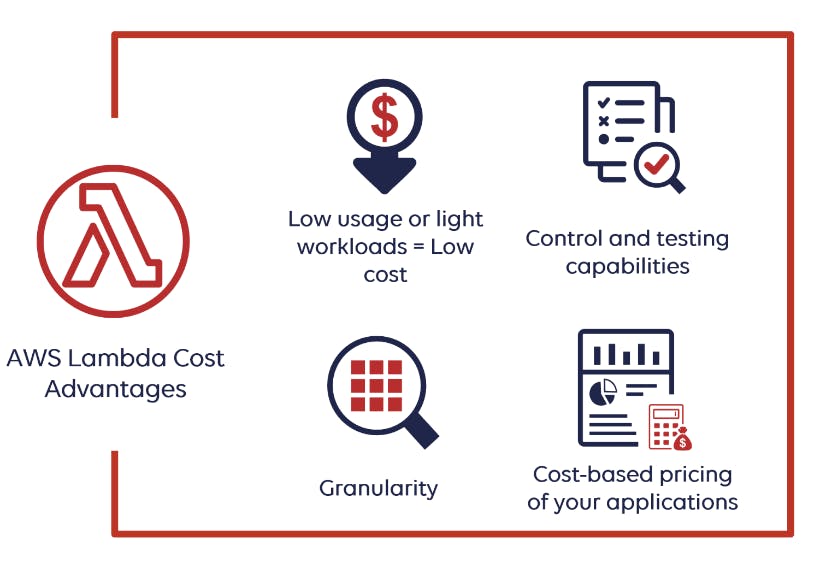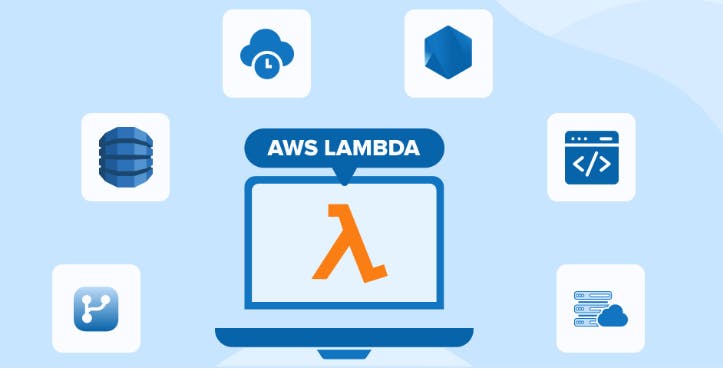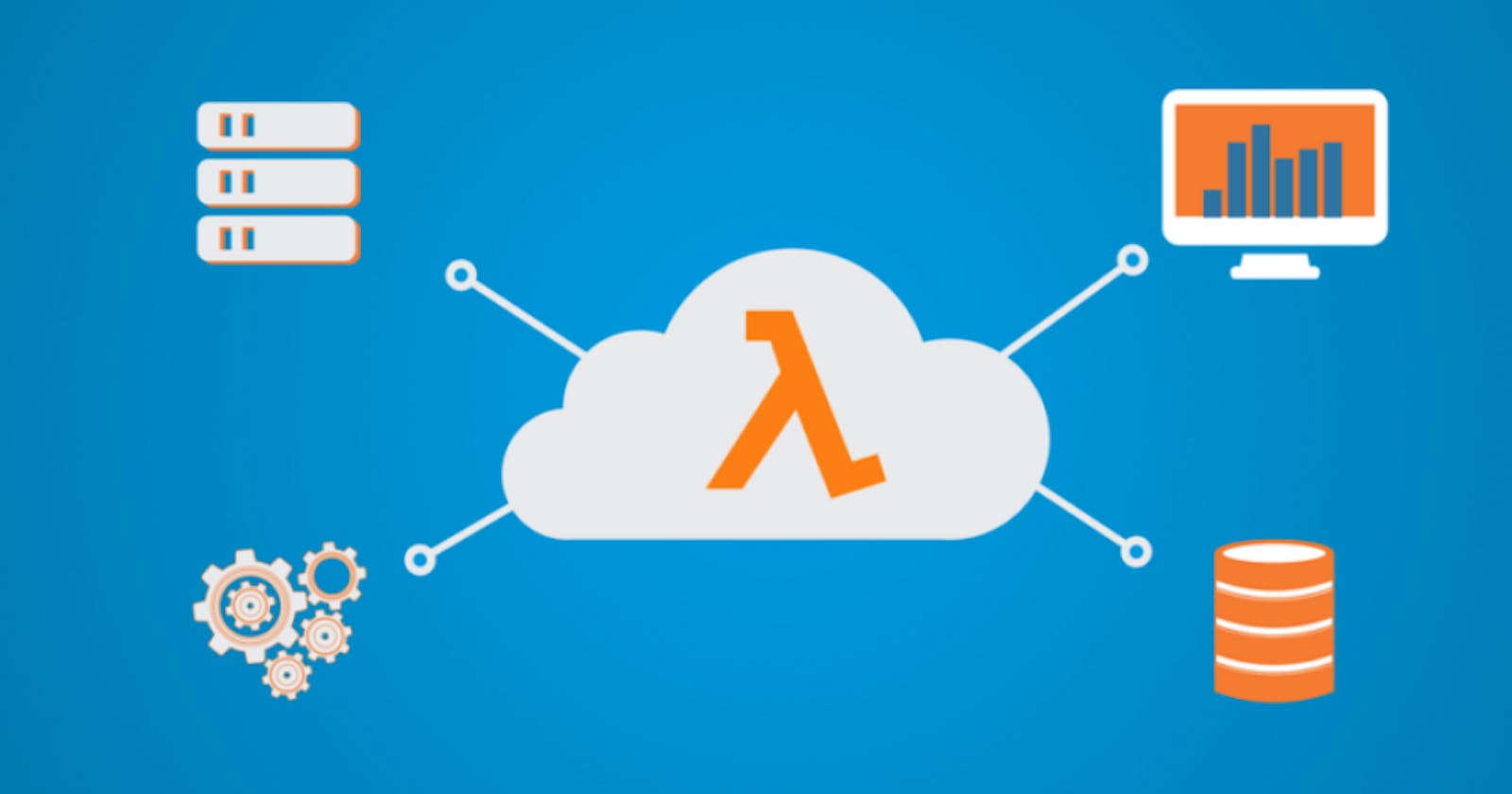10 Questions to Understand The Advantages of Serverless Computing with AWS Lambda
Q1 What is AWS Lambda and Serverless Computing?
Q2 Cost-Efficiency ?
Q3 Auto Scaling ?
Q4 Server Management?
Q5 Faster Time-to-Market?
Q6 Integrations and Event-Driven Architecture?
Q7 Stateless Execution and Horizontal Scaling?
Q8 Security?
Q9 Custom Runtimes?
Q10 Monitoring, Logging, and Troubleshooting?
Sure, I'll try to add more points to each subtopic. Here's the first message with the first four subtopics:
What is AWS Lambda and Serverless Computing?
Serverless computing is a cloud computing model where the cloud provider manages the servers and resources for running applications, and the developers only pay for the execution time and resources used by their code. This way, developers can focus on writing code without worrying about provisioning, scaling, or maintaining servers.
AWS Lambda is a serverless computing service offered by Amazon Web Services (AWS) that lets developers run code in response to events, such as HTTP requests, database changes, or messages from other services. AWS Lambda automatically scales up or down to handle the incoming events, and charges only for the compute time consumed by the code. AWS Lambda supports multiple programming languages, such as Node.js, Python, Java, Go, and Ruby.
Serverless computing enables developers to build applications that are more scalable, reliable, and cost-effective than traditional server-based architectures
AWS Lambda is one of the most popular and widely used serverless platforms in the market, with millions of customers and billions of invocations per day
AWS Lambda allows developers to write code using stateless functions that are triggered by events from various sources
AWS Lambda provides a range of features and integrations that make it easy to build and deploy serverless applications

Cost-Efficiency and Pay-as-You-Go Model
One of the main advantages of serverless computing is that it reduces the cost of running applications in the cloud. Unlike traditional server-based architectures, where developers have to pay for fixed server capacity regardless of usage, serverless computing only charges for the actual execution time and resources consumed by the code. This way, developers can save money by avoiding paying for idle server capacity or over-provisioning servers to handle peak demand.
AWS Lambda follows a pay-as-you-go billing model, where developers are charged based on the number of requests, the duration of execution, and the memory allocated to their functions. AWS Lambda also offers a generous free tier that allows developers to run up to 1 million requests and 400,000 GB-seconds of compute time per month for free. Additionally, AWS Lambda integrates with other AWS services that offer free tiers or discounts for serverless applications, such as Amazon API Gateway, Amazon S3, Amazon DynamoDB, and Amazon SQS.
Serverless computing enables developers to optimize their cloud spending by paying only for what they use
AWS Lambda provides transparent and predictable pricing that allows developers to estimate their costs based on their usage patterns
AWS Lambda also offers savings plans that allow developers to commit to a consistent amount of usage for one or three years and receive discounts up to 17% compared to on-demand pricing
AWS Lambda also supports reserved concurrency that allows developers to reserve a minimum number of concurrent executions for their functions and receive discounts up to 30% compared to on-demand pricing

Seamless Auto Scaling and High Availability
Another benefit of serverless computing is that it eliminates the need for manual scaling of servers to match demand. Serverless platforms automatically scale up or down to handle the incoming events, without any intervention from the developers. This way, serverless applications can handle any level of traffic without compromising performance or availability.
AWS Lambda handles automatic scaling by creating and managing multiple instances of a function in parallel to process concurrent events. AWS Lambda also ensures high availability by distributing the function instances across multiple Availability Zones within a region. AWS Lambda's event-driven architecture allows developers to trigger functions based on various sources of events, such as HTTP requests from Amazon API Gateway, messages from Amazon SNS or Amazon SQS, changes in Amazon S3 buckets or Amazon DynamoDB tables, or custom events from other AWS services or applications.
Serverless computing enables developers to build applications that are more responsive and resilient to changes in demand
AWS Lambda provides seamless auto scaling that allows developers to handle any number of requests without configuring or managing any servers
AWS Lambda also supports provisioned concurrency that allows developers to pre-warm function instances before an expected spike in traffic and ensure low latency for their users
AWS Lambda also supports asynchronous invocation that allows developers to queue events for later processing and retry failed invocations automatically

Zero Server Management and Operational Simplicity
A major advantage of serverless computing is that it simplifies the operational complexity and overhead of running applications in the cloud. Serverless platforms take care of all the server management tasks behind the scenes, such as provisioning, patching, updating, securing, monitoring, and logging. Developers only need to upload their code and configure their functions with some basic settings, such as memory size, timeout duration, and event sources.
AWS Lambda provides a zero-server management experience for developers who want to run code in the cloud without dealing with servers. AWS manages all the infrastructure and resources required for running Lambda functions behind the scenes. Developers can use the AWS Console, AWS CLI, AWS SDKs, or third-party tools to create and deploy Lambda functions easily. Developers can also use AWS CloudFormation or AWS SAM (Serverless Application Model) to define and deploy serverless applications as a collection of resources using templates.
Serverless computing enables developers to reduce their operational burden and focus on their core business logic and innovation
AWS Lambda provides a simple and intuitive user interface and developer experience that allows developers to write and test code quickly and easily
AWS Lambda also supports blue/green deployments that allow developers to deploy new versions of their functions gradually and safely
AWS Lambda also supports environment variables that allow developers to store configuration data and secrets securely and access them from their functions

Faster Time-to-Market and Rapid Innovation
Serverless computing enables faster time-to-market and rapid innovation for developers who want to build and deploy applications quickly. Serverless platforms reduce the development cycles by allowing developers to write code without worrying about servers or infrastructure. Developers can also leverage existing code libraries or frameworks to speed up their development process. Serverless platforms also enable faster deployment cycles by allowing developers to update their code without downtime or disruption.
AWS Lambda accelerates development cycles by allowing developers to write code in their preferred language and framework using familiar tools and IDEs. Developers can also use AWS Lambda’s built-in code editor to write and test code directly in the browser. AWS Lambda enables faster deployment cycles by allowing developers to update their code with a simple upload or a click of a button. Developers can also use versioning and aliasing features to manage different versions of their functions and control traffic routing between them.
Serverless computing enables developers to deliver value to their customers faster and more frequently
AWS Lambda supports continuous integration and continuous delivery (CI/CD) pipelines that allow developers to automate their testing and deployment processes
AWS Lambda also supports serverless application frameworks that allow developers to create, deploy, and manage serverless applications using best practices and templates
AWS Lambda also supports serverless application repositories that allow developers to discover, share, and reuse serverless applications and components

Integrations and Event-Driven Architecture
Serverless computing leverages an event-driven architecture where applications are composed of small functions that are triggered by events from various sources. This way, serverless applications can be more modular, decoupled, scalable, and responsive than traditional monolithic or microservices architectures. Serverless platforms also offer integrations with various services and platforms that can act as event sources or destinations for serverless functions.
AWS Lambda integrates with a wide range of AWS services and platforms that can trigger or invoke Lambda functions based on events.
⭐Some of the common integrations are:
Amazon API Gateway: A service that allows developers to create, manage, and secure RESTful or WebSocket APIs that can invoke Lambda functions to handle HTTP requests.
Amazon S3: A service that provides scalable and durable object storage that can trigger Lambda functions when objects are created, modified, or deleted in S3 buckets.
Amazon DynamoDB: A service that provides fast and flexible NoSQL database that can trigger Lambda functions when items are added, updated, or removed in DynamoDB tables.
Amazon SNS: A service that provides pub/sub messaging and mobile notifications that can trigger Lambda functions when messages are published to SNS topics.
Amazon SQS: A service that provides reliable and scalable message queues that can trigger Lambda functions when messages are available in SQS queues.
Amazon Kinesis: A service that provides real-time data streaming and analytics that can trigger Lambda functions when data records are available in Kinesis streams or Kinesis Data Firehose delivery streams.
Amazon Cognito: A service that provides user identity and access management that can trigger Lambda functions when users sign up, sign in, or perform other actions using Cognito User Pools or Cognito Identity Pools.
Amazon Lex: A service that provides conversational interfaces using voice and text that can invoke Lambda functions to fulfill user intents or validate user input.
Amazon Alexa: A platform that provides voice-enabled smart devices and skills that can invoke Lambda functions to handle user requests or events.
⭐ Some of the practical examples of AWS Lambda triggering based on events are:
Creating thumbnails of images uploaded to S3 buckets using Lambda functions
Processing data from IoT devices using Kinesis streams and Lambda functions
Sending email notifications using SES and Lambda functions
Building chatbots using Lex and Lambda functions
Developing serverless web applications using API Gateway and Lambda functions

Stateless Execution and Horizontal Scaling
Serverless computing relies on a stateless execution model where each function instance is independent and isolated from each other. This means that each function instance does not store any state or context information between invocations. This way, serverless platforms can scale horizontally by creating multiple function instances to handle concurrent events without affecting each other’s performance or behavior.
AWS Lambda follows a stateless execution model where each function instance is allocated its own execution environment with its own memory, CPU, network, and temporary disk space. Each function instance only has access to the event object and the context object passed by the event source. Each function instance does not retain any state or context information between invocations. AWS Lambda scales horizontally by creating multiple function instances to process concurrent events up to the concurrency limit configured by the developer or the default limit of 1000 concurrent executions per region per account.
⭐The stateless nature of AWS Lambda functions has some benefits and challenges for developers. Some of the benefits are:
Improved scalability and performance by allowing horizontal scaling without affecting each other’s state or context
Enhanced security and reliability by isolating each function instance from each other and preventing unauthorized access or interference
Simplified development and testing by avoiding state management complexity and ensuring consistent behavior across invocations
⭐ Some of the potential state management challenges are:
Difficulty in maintaining session or user state across invocations or function instances
Inability to use local caching or storage for performance optimization or data persistence
Need to use external services or databases for storing or retrieving state information
Enhanced Security and Reduced Attack Surface
Serverless computing offers enhanced security and reduced attack surface for developers who want to run code in the cloud without compromising their data or resources. Serverless platforms provide a secure execution environment for running code with built-in protection mechanisms such as encryption, isolation, authentication, authorization, and auditing. Serverless platforms also reduce the attack surface by eliminating the need for managing servers or infrastructure that could be vulnerable to exploits or breaches.
AWS Lambda provides a secure execution environment for running code with various security features and controls. Some of them are:
AWS Lambda encrypts data in transit using TLS and data at rest using AWS KMS
AWS Lambda isolates each function instance using Linux containers with firewalls and network access control lists
AWS Lambda authenticates each function invocation using IAM roles and policies
AWS Lambda authorizes each function access to other AWS resources using IAM roles and policies
AWS Lambda audits each function activity using AWS CloudTrail
AWS Lambda also reduces the attack surface by managing the security patches and updates for the underlying infrastructure and resources required for running functions. Developers do not need to worry about updating their servers or operating systems to fix security vulnerabilities or bugs. AWS Lambda also supports encryption in transit and at rest for data stored in other AWS services, such as S3, DynamoDB, or KMS.
Serverless computing enables developers to improve their security posture and compliance by delegating the security responsibilities to the cloud provider
AWS Lambda follows the shared responsibility model where AWS is responsible for the security of the cloud and the developer is responsible for the security in the cloud
AWS Lambda also supports various security standards and certifications, such as PCI DSS, HIPAA, SOC, ISO, and FedRAMP

Extensibility with Custom Runtimes and Layers
Serverless computing offers extensibility and flexibility for developers who want to run code in different languages or frameworks or use external libraries or dependencies. Serverless platforms provide support for various languages and frameworks and allow developers to customize their execution environment with additional code or resources.
AWS Lambda supports multiple languages and frameworks, such as Node.js, Python, Java, Go, Ruby, .NET Core, and PowerShell. AWS Lambda also allows developers to use custom runtimes for additional language support, such as PHP, Rust, or C#. Developers can use the Runtime API to create their own custom runtimes or use existing ones from the AWS Serverless Application Repository or third-party sources.
AWS Lambda also allows developers to use Lambda Layers for code sharing and separation. Lambda Layers are ZIP archives that contain libraries, dependencies, or other code that can be used by multiple functions. Developers can create their own Lambda Layers or use existing ones from the AWS Serverless Application Repository or third-party sources. Developers can also use Lambda Layers to enhance their functions with external libraries and dependencies, such as TensorFlow, NumPy, or Pandas.
Serverless computing enables developers to run code in their preferred language and framework using familiar tools and IDEs
AWS Lambda provides a consistent execution environment across all supported languages and frameworks
AWS Lambda also supports native modules that allow developers to use compiled libraries or binaries in their functions
AWS Lambda also supports container images that allow developers to package and deploy their functions as Docker-compatible images
Monitoring, Logging, and Troubleshooting
Serverless computing requires effective monitoring, logging, and troubleshooting tools and practices for developers who want to ensure the quality and reliability of their applications. Serverless platforms provide built-in or integrated tools and services for monitoring function performance and health, logging function activity and errors, and troubleshooting function issues and failures.
AWS Lambda integrates with AWS CloudWatch for monitoring function performance and health. Developers can use CloudWatch Metrics to track key metrics such as invocation count, duration, error rate, throttling rate, and memory usage. Developers can also use CloudWatch Alarms to set thresholds and notifications for these metrics. Developers can also use CloudWatch Dashboards to visualize these metrics in a single view.
AWS Lambda also integrates with AWS CloudWatch Logs for logging function activity and errors. Developers can use CloudWatch Logs to view the console output and error messages generated by their functions. Developers can also use CloudWatch Logs Insights to query and analyze their log data using a simple query language. Developers can also use CloudWatch Logs Groups and Streams to organize their log data by function name or version.
⭐AWS Lambda also provides various tools and features for troubleshooting function issues and failures. Some of them are:
AWS X-Ray: A service that provides end-to-end tracing and analysis of function invocations and requests
AWS Lambda Destinations: A feature that allows developers to route the success or failure results of function invocations to other AWS services or applications
AWS Lambda Dead Letter Queues: A feature that allows developers to configure an SQS queue or an SNS topic as a destination for failed function invocations
AWS Lambda Retry Behavior: A feature that controls how many times AWS Lambda retries failed function invocations based on the event source type
AWS Lambda Error Handling: A feature that allows developers to customize the error responses returned by their functions using the callback or context object
Serverless computing enables developers to monitor and troubleshoot their applications in real-time and proactively
AWS Lambda provides a comprehensive and integrated set of tools and services for monitoring, logging, and troubleshooting serverless applications
AWS Lambda also supports distributed tracing and observability tools that allow developers to track and visualize the performance and behavior of their serverless applications across multiple services and platforms

By understanding and leveraging the advantages of AWS Lambda and serverless computing, developers can build scalable, cost-effective, and resilient applications. With automatic scalability, global reach, reduced recovery time, and seamless integrations, AWS Lambda empowers organizations to focus on delivering innovative solutions without the burden of managing servers. The monitoring and optimization features further enhance the performance and reliability of serverless applications, making AWS Lambda a compelling choice for modern cloud-based architectures.

Email: gaurieyadav15402@gmail.com Linkedin : https://www.linkedin.com/in/gaurie-yadav/
